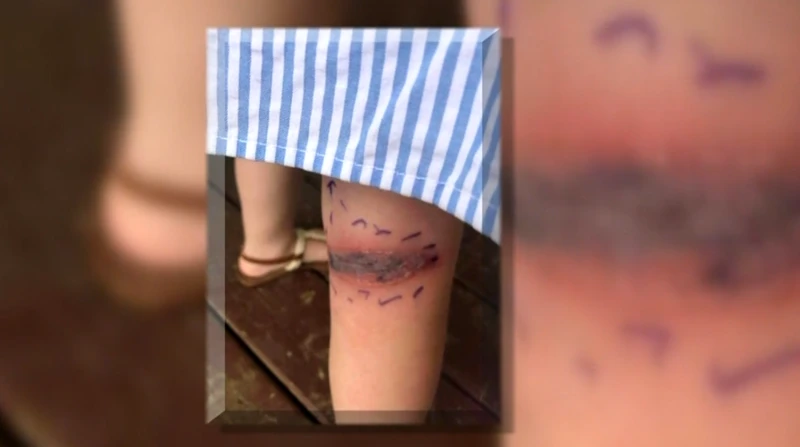Picture this: you’re spending time in your backyard, admiring the beautiful flowers, and suddenly you feel a sharp pain on your skin. When you look down, you spot a black widow spider crawling away from you. You start to panic and wonder, “What are the chances of being bitten by a black widow spider?” It’s a question that many people ask, and for a good reason. Black widow spiders have a reputation for being extremely venomous, and their bites can be deadly in some cases. In this article, we will explore the characteristics and habits of black widow spiders, the reasons why they bite, and most importantly, what you can do to avoid being bitten by them. We will also provide useful information on how to handle a black widow spider bite if it does happen to you. Let’s dive in!
What is a Black Widow Spider
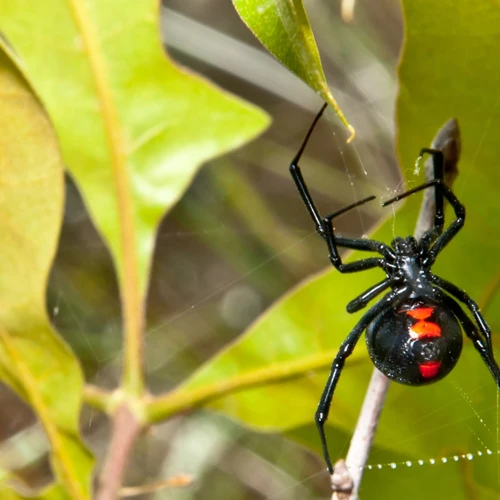
The black widow spider is a creature that strikes fear into the hearts of many people. This notorious spider is known for its deadly venom and distinct appearance. However, despite its reputation, many people may not be aware of all the features that make the black widow spider unique. In this section, we will explore the defining characteristics, habitats, and behaviors of the black widow spider. By the end, you will have a new appreciation for this fascinating and dangerous spider. For more information on what to do if you are bitten, check out our article on black widow spider bites.
Characteristic Features
Black Widow spiders are known for their distinctive features, which allow them to be easily recognized. They are medium-sized spiders, with females being larger than males. Their bodies are round and shiny, usually black, with a characteristic red or orange hourglass-shaped marking on their belly. The males have lighter coloring and lack the hourglass marking.
Black Widow spiders have eight legs and two body parts, the cephalothorax and the abdomen. The cephalothorax is covered with short, velvety hairs, and is attached to the abdomen by a thin stalk. The abdomen is highly rounded, and usually appears as if it is almost bursting. It is the location of the venom glands, which produce the neurotoxic venom that can be dangerous to humans.
Interestingly, the females are known for their cannibalistic behavior, which involves killing and eating males after mating. This behavior is uncommon but has been observed in the wild.
Black Widow spiders are known for spinning complex webs with criss-crossed strands. Their webs are known for being strong and sticky, which helps them catch their prey. These webs are often located in dimly lit areas, such as basements, garages, and crawl spaces, as well as in bushes and other outdoor areas.
It’s important to note that Black Widow spiders are not the only species with this distinct appearance. In fact, there are several other spiders that resemble Black Widow spiders and are often mistaken for them. These include the False Black Widow and the Brown Widow, both of which have venomous bites that can be harmful to humans.
If you want to learn more about the worldwide distribution of Black Widow spiders, follow this link.
Distribution and Habitats
Black Widow Spiders are primarily found in temperate regions such as North and South America. They often inhabit dry and dark places such as woodpiles, garages, sheds, and unused rooms. These spiders are most commonly found in the southern regions of the United States, particularly in the states of California, Texas, and Florida.
Apart from human habitats, black widows can be found in a variety of other habitats as well. Some of the natural habitats of black widow spiders include forests, meadows, deserts, and mountains. They are especially common in areas with a warm and dry climate. These spiders tend to prefer hiding in dark and sheltered places such as under rocks, in hollow logs, or in crevices under bark.
It is also important to note that the distribution and habitats of black widow spiders can vary based on the species. Black widows have different species, such as the western black widow and the southern black widow, each with its own specific range and preferred habitat.
In general, it is best to avoid areas where black widow spiders are likely to be present. If you must work in an area that is known to have black widow spiders, make sure to wear protective clothing such as gloves and boots to minimize the risk of being bitten.
For more information on the symptoms and treatment of black widow spider bites, check out our black widow spider bite symptoms timeline article.
Behavior and Diet
Black widow spiders are mainly known for their toxic bites that pose a possible threat to humans. However, their behavior and diet are also worth exploring to understand the creatures better.
Behavior
Black widow spiders are solitary creatures, and they usually spend most of their time hidden in a small and dark area. They are most active during the night and prefer to spin webs in dry habitats, such as woodpiles, rubble piles, and abandoned rodent burrows. The web of a black widow spider is messy and irregular, and the spider itself often hangs upside down in the middle of the web, waiting for prey to come its way.
When threatened, black widow spiders exhibit aggressive behavior, such as biting and injecting their venom. They usually try to retreat and hide when they feel threatened, but if they find themselves cornered, they will bite as a defense mechanism.
Diet
Black widow spiders are carnivorous and feed mainly on insects, such as flies, mosquitoes, grasshoppers, and beetles. They use their webs to catch prey that flies or crawls into them. Once caught in the web, the spider bites the prey to inject venom that paralyzes it and makes it easier to consume.
The venom of a black widow spider is particularly powerful, and even small amounts may be deadly to their prey. The spider injects digestive enzymes into the prey’s body and then sucks out the liquified remains.
Black widow spiders have fascinating behavior and diet habits. While they are usually not aggressive towards humans, it is essential to note their defensive behavior and possible dangers they present. Understanding such behavior and diet may help prevent confrontation and conflict with black widow spiders, which can help avoid potential black widow spider bites.
Why Black Widow Spiders Bite
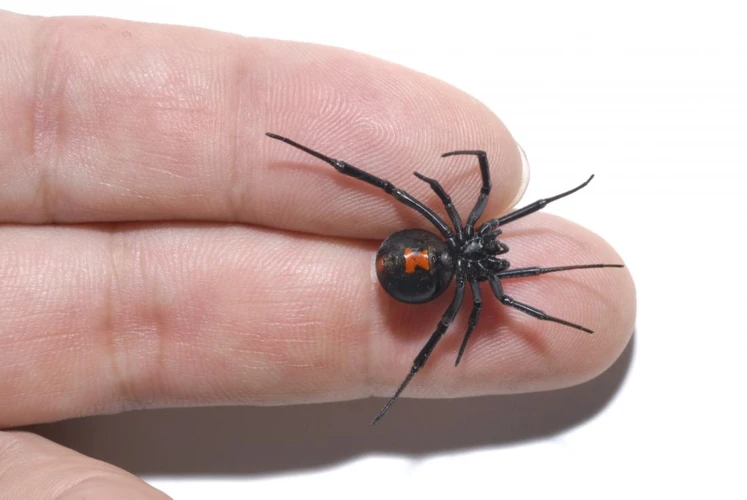
It’s not uncommon to wonder why black widow spiders bite humans. After all, we don’t pose any threat to these eight-legged creatures. However, understanding their motivations can help us learn how to avoid bites and take appropriate action if we are bitten. Black widow spiders typically bite as a form of defense or protection and also during feeding or reproduction. Let’s take a closer look at these causes and what they can mean for humans. In the unfortunate case that you are bitten by a black widow spider, it’s important to know what steps to take next. You can find more information on black widow spider bite treatments and potential outcomes such as chronic pain, medication relief or psychological symptoms by following the links.
Defense and Protection
Black widow spiders are known for their distinctive appearance and venomous bites. The venom from a black widow spider can cause serious health concerns, especially in those who are particularly sensitive. However, it’s important to note that black widow spiders typically only bite when they feel threatened or need to protect their eggs.
Defense Mechanisms: Black widows have developed several defense mechanisms to keep themselves safe from potential threats. Firstly, they use their bright red markings as a warning to predators that they are venomous and should not be approached. Secondly, they may hide in dark, secluded areas to avoid conflict altogether. Finally, if they feel threatened or cornered, they will bite to defend themselves.
Protection of Offspring: Black widow spiders are also fierce protectors of their offspring. Female black widows will lay their eggs in a silken sac, which they then guard closely. If anything or anyone comes too close to their eggs, they will bite to drive the predator away. This is why it’s especially important to be cautious around black widows during their mating season, which typically occurs in the summer months when they are most active.
It’s important to remember that black widow spiders are not aggressive and will only bite when they feel threatened or need to protect their offspring. If you spot a black widow spider, it’s best to give it plenty of space and not attempt to handle or approach it. For more information on how to handle a black widow bite, visit our page on black widow spider bite treatment.
Feeding and Reproduction
Black widow spiders are known for their distinctive feeding and reproduction habits. These spiders are carnivores and consume their prey, which typically consists of insects, small animals, and other spiders. They use their venomous bites to immobilize their prey before consuming them.
Black widow spiders reproduce through sexual reproduction, with the female spider being significantly larger than the male. After mating, the female spider may consume the male, which is a common phenomenon in the spider world. The female spider then lays eggs, which are encased in a silk sac. The number of eggs laid by a female black widow spider can vary from a few hundred to several thousand. Once the eggs hatch, the spiderlings start their life cycle and begin hunting as soon as they can.
It’s important to note that although black widow spiders are venomous and can be dangerous, they are not naturally aggressive towards humans and will only bite when they feel threatened or provoked.
In terms of feeding and reproduction, black widow spiders are fascinating creatures with unique behaviors. However, if a person is bitten by a black widow spider, it can lead to serious health complications and medical attention should be sought immediately. To learn more about treatment options and potential psychological symptoms of a black widow spider bite, check out our articles on black widow spider bite treatments in development and psychological symptoms of a black widow bite.
Actual Chances of Being Bitten by a Black Widow Spider
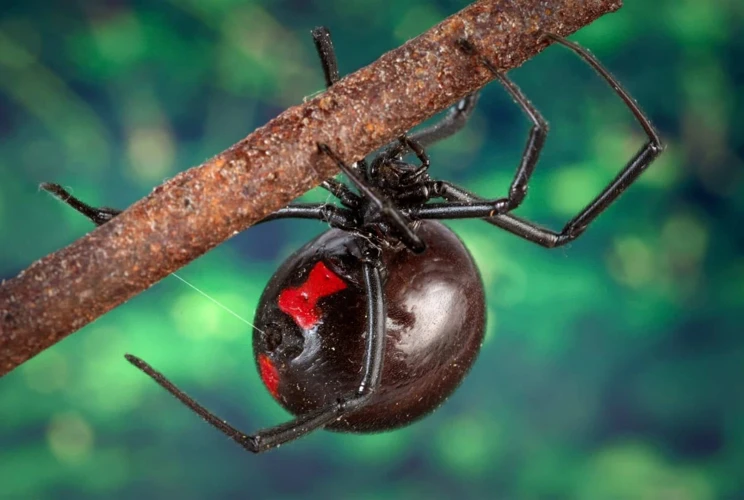
When it comes to the fear of black widow spider bites, many people may wonder: what are the actual chances of getting bitten? While these spiders are common in some regions, it is important to understand that not all encounters with these spiders will result in a bite. However, it is crucial to know the factors that can increase the risk of being bitten. Let’s take a closer look at the statistical data and factors that can affect your chances of a black widow spider bite.
Statistical Data on Black Widow Spider Bites
According to statistical data, black widow spiders are responsible for less than 1% of spider bites reported in the United States. However, their bites are considered to be very dangerous due to the potency of their venom. In fact, black widow spider bites can cause severe symptoms that can last for several days or even weeks.
The majority of black widow spider bites occur between April and October, during their active season. They are most likely to be found in warm and dry climates, such as the southern and western regions of the United States.
Symptoms of a black widow spider bite can include intense pain and muscle spasms around the bite site. Other symptoms may include headache, nausea, and vomiting. In rare cases, black widow spider bites can be fatal, especially in young children and older adults.
Interestingly, male black widow spiders are rarely responsible for human bites as they are smaller and less venomous than females. Female black widow spiders are known to produce stronger venom and are the most venomous spiders in North America.
It should be noted that not all black widow spider bites result in severe symptoms. Some people may not even realize that they have been bitten until later, as symptoms can take time to develop. However, it is important to seek medical attention immediately if you suspect that you have been bitten by a black widow spider, especially if you are experiencing severe symptoms such as intense pain or muscle spasms that are not improving.
In contrast to popular belief, black widow spider bites do not typically cause chronic pain. In fact, most symptoms usually subside within a few days to a few weeks of receiving treatment. There are various medical treatment options that can relieve the symptoms of a black widow spider bite, including the use of medications such as muscle relaxants and pain relievers.
While the chances of being bitten by a black widow spider are relatively low, it is important to take preventive measures and educate yourself on the risks of encountering these dangerous arachnids.
Factors that Increase the Risk of Being Bitten
Factors that Increase the Risk of Being Bitten by a Black Widow Spider
Black widow spiders are shy and will only bite humans in self-defense or when they feel that their nest is threatened. However, certain factors can make it more likely for a person to be bitten by a black widow spider:
- Living in black widow spider habitats. Black widow spiders are most commonly found in warm, dry regions, such as the southern and western parts of the United States. If you live in one of these areas, you are more likely to encounter black widow spiders and their webs.
- Being in or near areas where black widow spiders live. Black widow spiders are commonly found in outdoor areas such as woodpiles, sheds, garages, and other dark, secluded areas. If you spend a lot of time in these areas, you are more likely to come into contact with a black widow spider.
- Wearing clothes that attract black widow spiders. Black widow spiders are attracted to dark, tight-fitting, and textured clothing that can provide a good hiding place for them. If you wear these types of clothes, you may inadvertently attract a black widow spider.
- Handling or disturbing black widow spiders or their webs. If you accidentally disturb a black widow spider or its web, it may feel threatened and try to bite you in self-defense. It’s important to be cautious when handling or cleaning areas where black widow spiders may be present.
- Having a weakened immune system or allergies. People with weakened immune systems, such as those with HIV or cancer, or those with severe allergies may be more susceptible to the venom of a black widow spider bite and may experience more severe symptoms.
It’s important to note that while these factors may increase your risk of being bitten by a black widow spider, bites are still relatively rare. In fact, according to the National Institutes of Health, less than 1% of black widow spider bites result in death. However, if you are bitten by a black widow spider, it’s important to seek medical attention immediately to ensure prompt treatment.
How to Avoid Being Bitten by a Black Widow Spider
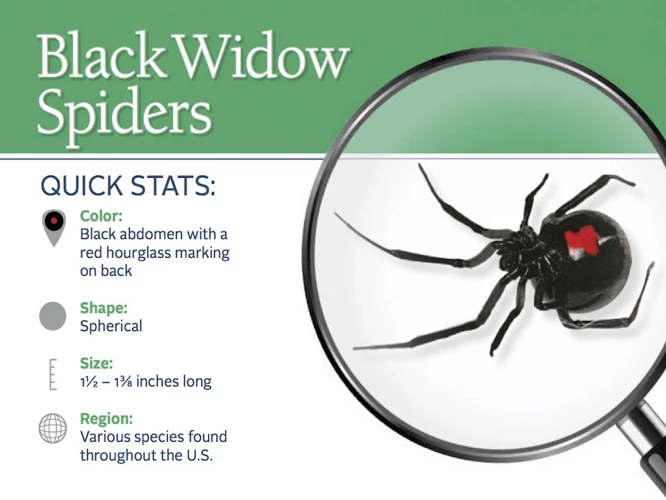
It’s always better to prevent than to treat, especially when it comes to dangerous spider bites like those from the black widow spider. Taking the necessary precautions can greatly reduce your chances of getting bitten. In this section, we’ll explore preventive measures indoors and outdoors that you can take to avoid a black widow spider encounter. And if you’re wondering what to do if you spot one, keep reading to find out.
Preventive Measures Indoors and Outdoors
Preventing a black widow spider bite should be a priority for everyone, especially those who live in areas where these spiders are commonly found. Indoors, you should keep your living spaces clean and free of clutter, including boxes, bags, and other objects that may provide a hiding place for these venomous spiders. It is also important to inspect items that have been stored away for a long time before bringing them back into your living area. Outdoors, you should keep your yard tidy, removing any debris and fallen leaves that could create a habitat for black widow spiders.
Here are some preventive measures for indoors and outdoors to reduce the likelihood of encountering black widow spiders:
| Indoors | Outdoors |
|---|---|
| Keep living spaces clean and free of clutter | Keep your yard tidy by removing any debris |
| Inspect items that have been stored away for a long time before bringing them back into your living area | Seal all cracks and holes in your home’s foundation and windows |
| Keep your bed away from walls and curtains | Avoid leaving footwear and clothing outside or in garages and sheds |
| Shake out clothing and shoes before putting them on | Wear gloves when moving outdoor items that have been stored indoors |
| Store firewood and other outdoor objects away from the house | Keep the surrounding areas free of clutter and debris |
Taking these preventive measures can help minimize your chances of encountering a black widow spider indoors or outdoors. If you do spot a black widow spider, always proceed with caution and consider consulting a professional pest control service. Remember, prevention is key when it comes to avoiding dangerous spider bites!
What to Do If You Spot a Black Widow Spider
In the event that you spot a Black Widow Spider in your home or outdoor space, it is important to take precautions to avoid being bitten. The first step is to avoid any physical contact with the spider, as it may perceive you as a threat and respond by biting.
Here are some steps to follow if you spot a Black Widow Spider:
| Step | Action |
|---|---|
| Step 1 | Back away slowly and calmly, without turning your back on the spider. |
| Step 2 | Use a stick or broom to create a barrier between you and the spider if necessary. Never use your bare hand, as this increases the risk of being bitten. |
| Step 3 | Contact a professional pest control service to safely remove the spider from your home or outdoor space. |
It is important to note that attempting to kill or handle a Black Widow Spider on your own can increase the risk of being bitten. It is always best to seek professional help if you are uncertain about how to deal with a potential Black Widow Spider infestation.
If you are interested in learning more about the long-term effects of Black Widow Spider bites, you can read our article on black widow spider bites and chronic pain. Additionally, if you are curious about what a Black Widow Spider bite may feel like, our article on what it feels like to be bitten by a black widow spider may be of interest.
What to Do If You Are Bitten by a Black Widow Spider
If you find yourself bitten by a Black Widow spider, it’s crucial to act quickly and seek medical attention. These spiders have venom that can cause serious symptoms, especially for young children, the elderly, or those with weakened immune systems. In this section, we will discuss what steps should be taken immediately after a Black Widow spider bite to minimize the risk of further complications. Let’s dive into the first-aid steps and medical treatment options that can help alleviate the symptoms of a Black Widow spider bite.
First-Aid Steps
If you are bitten by a black widow spider, it is essential to take swift first-aid measures to minimize its effects. Follow these steps to ensure a quick recovery:
- Wash the Bite Area: Use soap and water to wash the bite area thoroughly to remove any venom that may still be on the site. Rinse with cold water and pat with a clean, dry cloth.
- Apply a Cold Compress: Apply a cold compress to the bite area to reduce inflammation and pain. You can use a bag of ice or a cloth soaked in cold water. Keep it on the bite area for 10 to 20 minutes, removing it for 10 to 20 minutes, and replacing it. This alternating treatment should continue for up to an hour.
- Keep the Bite Area Elevated: Keeping the affected limb elevated above heart level will help slow down the spread of the venom to other parts of the body. Use pillows to elevate the limb.
- Take a Pain-Reliever: Over-the-counter pain relievers, such as ibuprofen or acetaminophen, can help alleviate pain and reduce swelling.
- Check for Signs of Severe Reaction: Black widow spider bites can lead to severe symptoms, such as muscle cramps, spasms, and abdominal pain. If you experience any of these symptoms, seek medical assistance immediately.
- Avoid Stimulating the Bite Area: Avoid wearing tight clothing or applying heat to the bite area as it could cause the venom to spread quickly.
Remember to stay calm and seek medical help if the symptoms worsen. Prompt first-aid measures can help minimize the impact of black widow spider venom and ensure a quick recovery.
Medical Treatment Options
After being bitten by a Black Widow spider, it is crucial to seek medical attention as soon as possible. The severity of the symptoms will depend on several factors such as age, overall health, and the amount of venom injected. Medical professionals will determine the appropriate treatment approach based on the severity of the bite.
1. Pain Management: The pain associated with a Black Widow spider bite can be excruciating, and medical professionals will first focus on managing the pain. They may prescribe pain medication or use over-the-counter pain relievers to help alleviate the discomfort.
2. Anti-Venom: Black Widow spider anti-venom is available, but it is not always necessary to use it. Medical professionals will assess the individual case and determine if the benefits of anti-venom outweigh the potential risks. In some cases, anti-venom can cause an allergic reaction, so doctors will weigh the risks and benefits carefully.
3. Muscle Relaxants: Black Widow spider venom attacks the nervous system and can cause severe muscle cramps and spasms. Medical professionals may prescribe muscle relaxants to help alleviate the symptoms.
4. Observation: In severe cases, hospitalization may be necessary. Patients will be closely monitored to ensure that their condition is improving and that no secondary complications occur.
It is important to note that recovery time from Black Widow spider bites can vary and that some symptoms may persist for several weeks. If you experience any adverse or unusual symptoms, seek medical attention immediately.
Remember that prevention is the best approach when it comes to Black Widow spider bites. Taking precautions such as wearing protective clothing and using insect repellent can help reduce the risk of being bitten.
Conclusion
After delving into the details of black widow spiders, we can conclude that while they are indeed venomous and potentially dangerous, the chances of being bitten by one are relatively low. By taking the necessary precautions and being aware of the risk factors, individuals can greatly reduce their likelihood of encountering these spiders and being bitten.
However, it is important to note that if one does get bitten by a black widow spider, prompt medical attention is crucial to ensure a positive outcome. The venom of a black widow spider can cause a range of symptoms, from mild discomfort to severe and even life-threatening effects.
In conclusion, while black widow spiders may instill fear in many people, it is important to approach the situation with knowledge and precaution. By learning about the characteristics and behavior of these spiders, individuals can make informed decisions to reduce their risk of encountering them and to seek appropriate medical treatment in the event of a bite.
Frequently Asked Questions
Q: What do black widow spiders look like?
Black widow spiders are typically black in color and have a distinct red hourglass-shaped marking on their abdomen. Females are larger in size than males and are known for their shiny, round bodies.
Q: Are black widow spiders venomous?
Yes, black widow spiders are venomous and their bites can cause serious health problems.
Q: How do black widow spiders hunt for prey?
Black widow spiders spin webs to catch their prey, which usually consists of insects and other small animals.
Q: Where do black widow spiders live?
Black widow spiders are found in every continent except Antarctica and prefer dry, dark locations such as woodpiles, garages, and basements.
Q: What is the behavior of black widow spiders like?
Black widow spiders are primarily nocturnal and are solitary in nature. They typically only bite humans when they feel threatened.
Q: How toxic is the venom of a black widow spider?
The venom of a black widow spider is highly toxic and can cause severe muscle cramps, tremors, and abdominal pain.
Q: What is the first aid treatment for a black widow spider bite?
The first aid treatment for a black widow spider bite involves cleaning the wound and applying a cold compress to the affected area. It is important to seek medical attention immediately.
Q: How can black widow spider bites be prevented?
To prevent black widow spider bites, it is important to keep homes and outdoor living areas clean, remove clutter and debris, and wear protective clothing and gloves when working in areas where black widow spiders may be present.
Q: Are black widow spiders aggressive?
No, black widow spiders are typically not aggressive and will usually only bite humans when they feel threatened.
Q: Can black widow spider bites be fatal?
While rare, black widow spider bites can be fatal, especially in children, elderly individuals, and individuals with compromised immune systems.

